W tym przewodniku, I will teach you how to calculate the price of different resources and also offer a tool, in excel, to help you calculate it yourself. Wreszcie, I would give some advice on how to exploit this knowledge for AI, the purpose.
Section I: Labor Theory of Value
The labor theory of value (LTV), usually associated with Marxian economics, argues that the economic value of a good or service is determined by the total amount of “socially necessary labor” required to produce it. Often this is expressed mathematically as:
C + L = W
Gdzie:
- C is the constant capital of materials used in a period plus the depreciated portion of tools and plants used in the process. (A period is typically a day, week, rok, or a single turnover: meaning the time required to complete one batch of coffee, for example.)
- L is the quantity of labor time (average skill and productivity) performed in producing the finished commodities during the period
- W is the value (or think “wartość”) of the product of the period ( w comes from the German word for value: wert)
To put it in the simple world: Value of Input + Value added by Labor = Value of Output
Section I: Labor Theory of Value in Stellaris
Put Labor Theory of Value into work, we can get the following equation from a Technician Job.
Technik: 0E+0M+1F+0.25C+0A+0S+1P = 6E
Krótko mówiąc, 1F + 0.25C + 1P = 6E.
Gdzie:
- mi is Energy. M is Mineral. F is Food. C is Consumer Goods. A is Alloy. S is Strategic Resource. P, short for PoP, stands for the labor value of a technician per month.
- What this equation means is that a technician cost 1 Food and 0.25 Consumer Goods for upkeep and produces 6 Energy per month. Krótko mówiąc, 1F + 0.25C + 1P = 6E. Don’t forget that the labor value, P, should be added to the value of the input to get the final value of the job’s output.
- I do not count for modifier and upkeep for building and district in the above equation. Things like these will be covered in section II. W tej sekcji, we are just discussing the general theory and principle, so a simplified example is offered.
In the Labor Theory of Value, the labor value is the same for everyone, no matter who you are. Dlatego, the labor value per month of a ruler is the same as that of a slave.
Nie’t know about real-world economic, but I believe it is true in Stellaris. A PoP is a PoP. I do not care about its social status. Dla mnie, every PoP certainly has the same labor value per month.
Dlatego, we could apply the same Labor Theory of Value rule to different jobs and we could get a bunch of equations from each resource job.
Every job, regardless of social status, has the same labor value per month, which means they all have the same P in the equation. Remember that P stands for the labor value per month of a PoP.
Technik: 0E+0M+1F+0.25C+0A+0S+1P = 6E
Miner: 0E+0M+1F+0.25C+0A+0S+1P= 4M
Rolnik: 0E+0M+1F+0.25C+0A+0S+1P = 6F
Artisian: 1E+6M+1F+0.50C+0A+0S+1P = 6C
Metallurgy: 0E+6M+1F+0.50C+0A+0S+1P = 3A
Strategic Resource: 0E+10M+1F+0.50C+0A+0S+1P = 2S
The above equation could be shortened as below for easier understanding. i just delete those 0 numbers from the above equation.
Technik: 1F+0.25C+1P = 6E
Miner: 1F+0.25C+1P= 4M
Rolnik: 1F+0.25C+1P = 6F
Artisian: 6M+1F+0.5C+1P = 6C
Metallurgy: 6M+1F+0.5C+1P = 3A
Strategic Resource: 10M+1F+0.5C+1P = 2S
If you do not skip your math class, you can easily solve a group of equations like the below:
X + y =13
2X – y =2
The equation group we get from Stellaris looks daunting, but it is still easily solvable. Nowadays we let computers do the calculation instead of ourselves. I, here is the result:
- 1 Mineral = 1.5 Energia
- 1 Food = 1.0 Energia
- 1 Consumer Good = 2.6 Energia
- 1 Alloy = 5.2 Energia
- 1 Strategic Resource = 10.8 Energia
- 1 month of labor value of a PoP = 4.3 Energia
The above result is very similar to the market price in Stellaris.
Because the market price of minerals is just 1.3, lower than its true value, therefore, players tend to buy minerals from the market at the very start of the game.
Wniosek
To sum up. W tej sekcji, we learn that we could easily get the true value, or trading price in energy, for various resources by applying LTV theory and solving a group of equations. And the result is very satisfying since it is valid and has a sound economic theory behind it.
1 Food trade for 1 Energia, because they both have the same efficiency, to jest, 1 PoP produces 6 Energy or 6 Food with the same upkeep. 1 Mineral trade for 1.5 Energia, ponieważ 1 PoP produces only 4 Mineral instead of 6 Energy with the same upkeep.
Tak, that is the law of the value of commodities from Karl Marx for you, in case you skip your economics lesson during class.
Law of value
The law of the value of commodities (niemiecki: Wertgesetz der Waren), known simply as the law of value, is a central concept in Karl Marx’s critique of political economy. Most generally, it refers to a regulative principle of the economic exchange of the products of human work, namely that the relative exchange values of those products in trade, usually expressed by money prices, are proportional to the average amounts of human labor time which are currently socially necessary to produce them within the capitalist mode of production.
Mówiąc najprościej, if product A takes 100 hours of human work to produce in total, and product B takes 5 hours to produce, the normal trading ratio of A and B will gravitate to a rate of around 1:20 (one of A is worth 20 or B) because A is worth much more than B.
Section II: Calculator
If you are as lazy as me and do not want to do the calculation work, here is the good news for you. I create an excel file to do the calculation of Section I and this calculator could count for modifier and district and building upkeep.
The file looks like this.

What you need to do is:
- Fill in the data from Stellaris into the green area, A3:G8, and H3:M8. Green areas A3:G8 are data from the job’s tooltip. Green Area H3:M8 are data from the district and building.
- Copy data from orange area P3:W8 into Octave and press Enter. Then Copy data from the orange area Y3:AA9 into Octave and press Enter. Octave would do the calculation for you.
- Copy results from Octave and paste them into the red area AD3:AD8.
- Enjoy the calculated price, in energy, for your various resource.
I would choose one of my late-game save, the year 2355, as an example to guide you through the process.
Section II: Fill in green areas A3:G8 and H3:M8
Take technician, Na przykład, the same job tooltip shows it produces 24.5 Energy and cost 1.1 Food and 0.2 Consumer Goods. And we fill 24.5 in cell B3, -1.1 in cell C3 and -0.2 in cell E3. Positive for production and Negative for cost and upkeep.
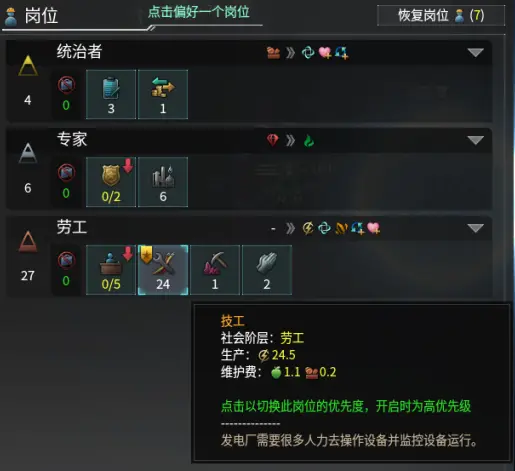
PS: Ja mam 1.1 food upkeep due to edict which increase grwoth rate at the cost of foods. Ja mam 0.2 Consumer Goods upkeep due to tradition which reduce my pop, district and building upkeep by 10%.
A technician need power district and power building for job and increase capacity. Power District cost 0.9 E and offer 2 praca. Power capacity building cost me 1.8 E and 0.9 S for upkeep and this upkeep are shared by 24 technik. Dlatego, I fill “=-0.9/2-1.8/24” in cell H3 and fill “=0.9/24” in cell M3.


You just do the same for other jobs.
PS: The reason why cell B6 from artisan jobs has +2 Energy is that I have master crafter civic which gives +2 trade value for artesian and those trade values could transfer into +2 energy.
PS2: Oh, Tak. I am Chinese. It is the reason that there are so many grammar errors in this guide and I am so familiar with Marxian Economics and math. And I am a communist too. Żartuję. We learn about communism at school, but no one takes it seriously.
Section II: Copy data from orange area into Octave
Data in the orange area serve two purposes.
- First to sum up all the costs, utrzymanie, and production from the green area.
- Second prepare the data in a form that Octave can recognize and compute.
Copy data from orange area P3:W8 into Octave and press Enter.
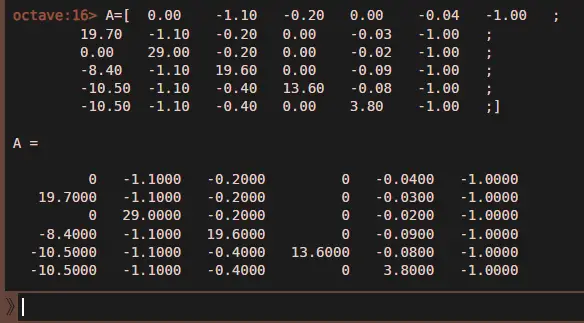
Then Copy data from orange area Y3:AA9 into Octave and press Enter.
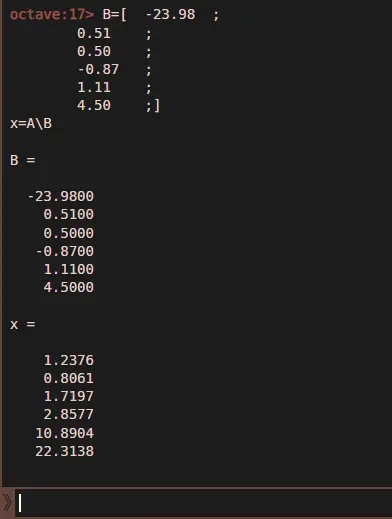
Section II: Copy result from Octave and paste it into red area AD3:AD8.
Copy data below line “ x = ”, as the below highlight area in the picture.

PS: It is highlighted because I selected it therefore I can copy it.
Section II: Enjoy the calculated price, in energy, for your various resource.
And here is the final result. W tej grze, one mineral has a value of 1.2 energy, casue production of mineral is not as efficient as energy. One food has a value of 0.8 energy, due to the fact that I found a planet with 40% food production bonus. Etc.
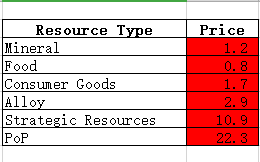
PS: If you are lazy, you could skip the step, in which you fill data in green area H3:M8 which corresponding to upkeep of district and building. Z moich testów, the result is very simmilar. The below picture show the two result, while the right column is the result without counting upkeep of district and building.
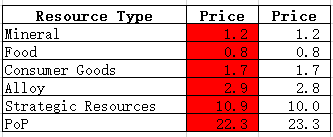
The reason is that buildings’ upkeep are shared by many PoPs, therefore it is very small in the end. District’s upkeep is small at the very begining.
Section III: Exploit this Knowledge
Since we know the exact price of our resources, we could exploit it in several area.
Rynek:
Due to the fact that production of energy is more efficient thant mineral. Mineral would always cost higher than energy. Therefore a common trick that player frequently use is to buy in mineral from market at 50 untis per month. It is better than producing mineral yourself.
Przez większość czasu, I try to minimize or skip my mineral production, since you can use energy to build district and buildings with the auto management feature introduced in 3.5. And mineral is quite aboundant from mining station, which requires not labour. Więc, I would prioritize energy production tech much more than mineral.
When the galatic market is open, I tend to sell and buy in a large quantity of goods from the market as long as it is profitable. And with my calculator, I know exactly which price is profitable for me.
Trading with AI:
Stellaris AI has a tendency of value food, strategic resource and mineral too high. Dlatego, I enjoy selling my strategic resource and occasionaly food to AI very much.
100 strategic resource for 4110 energy, it is like selling strategic resource at a price of 41.1 energy, which is way too high.
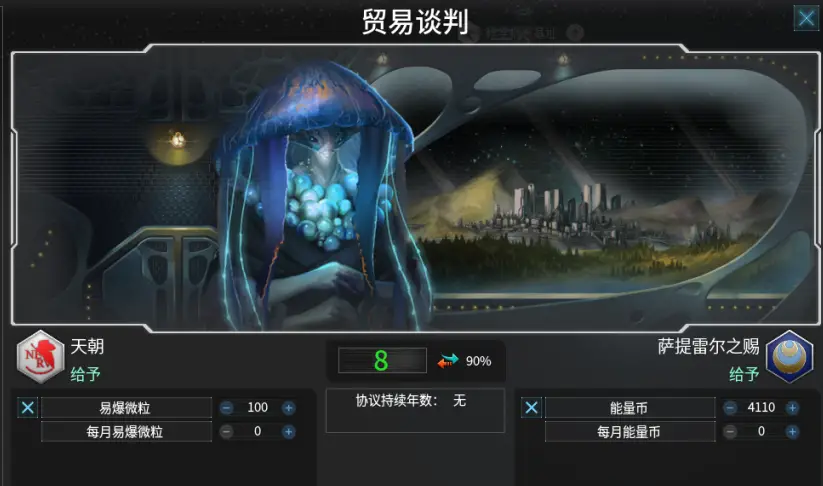
Another tips of going into aggresive trade war is that you can trade your strategic resource with AI aggressively and drive their energy, or mineral, stock and monthly income near zero.
In this way, theri economic is crippled. They do not have enough energy for daily upkeep and they have to sell strategic resource, bought from you, to the market for energy. Niemniej jednak, they are screwed by accepting a worse deal with you at the first place. I tend to find out that AI who trade with me in a large quantity would fail in power very soon.
Drugi, when they are forced to sell in market, the price would fall and you could buy back the strategic resource you just sell in a much lower price. Double win for you.
To wszystko, co dzisiaj udostępniamy w tym celu Stellaris przewodnik. Ten przewodnik został pierwotnie stworzony i napisany przez Vecho. Na wypadek, gdybyśmy nie zaktualizowali tego przewodnika, możesz znaleźć najnowszą aktualizację, postępując zgodnie z tym połączyć.

